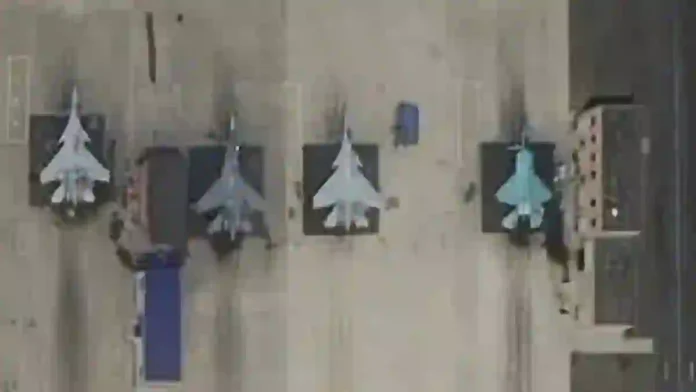China’s reported decision to deliver 30 J-35A fifth-generation stealth fighter jets to Pakistan at a 50% discount by August 2025 has ignited a storm of criticism across Chinese social media, with citizens openly questioning both the financial rationale and strategic wisdom of the move. The deal, which would mark China’s first export of a fifth-generation combat aircraft, is being widely derided as reckless, with many labelling it a “charity sale” to a financially unstable neighbour that still owes money for previous defence purchases.
Social Media Outrage: “We Pay The Price”
Chinese netizens have been particularly vocal, expressing disbelief that Beijing would prioritise the export of an unproven, in-testing aircraft—one not even inducted into the People’s Liberation Army Air Force—over domestic needs. Many users cited Pakistan’s dependence on IMF funding and its overdue payments for earlier Chinese jets, such as the J-10C, as evidence of Islamabad’s inability to afford such advanced weaponry. One user bluntly asked, “How can it afford to buy it? It hasn’t even paid for the J-10,” while others criticised the government’s manufacturing priorities, questioning why China’s own production of the J-35 has not been built up before exporting it.
Read- Rudram-2, Rudram-3, Rudram-4 Missiles Under Development
The phrase “2 more powerful printers are coming,” widely shared on Chinese platforms, was interpreted as a sarcastic reference to either ramping up jet production or metaphorically “printing money” to subsidise the deal, fuelling further resentment about the financial burden on Chinese taxpayers.
Timing And Strategic Concerns
The announcement’s timing—just days after a deadly terror attack in Pahalgam, Jammu & Kashmir—has added to the controversy. Indian observers see the move as Beijing arming its ally against Indian forces, while Chinese citizens question whether their government is effectively subsidising weapons for a client state with a poor credit history. Many argue that the money would be better spent on domestic infrastructure and industrial upgrades rather than risky arms exports.
Selling Unfinished Products
The J-35A, also known as the FC-31, is still undergoing testing and has yet to be formally inducted into China’s own air force. Unlike the American F-35, which has seen hundreds of operational deliveries, the Chinese stealth fighter remains pre-operational. Critics argue that China is gambling by using the Pakistani order to market the aircraft internationally, despite the lack of combat experience or confirmed specifications. Experts suggest that while the J-35 may eventually feature advanced sensors and integrated battlefield communication systems, it is currently being sold as a concept rather than a proven platform.
Read- DRDO Actively Developing 300km Pinaka, To Be Inducted In 3-5 Years Says DRDO Chief
Read- DRDO Developing A High-Power Microwave DEW Weapon System
Regional Implications And Official Silence
Pakistani pilots are reportedly already undergoing training in China to operate the J-35s, highlighting the seriousness of the transfer. However, the Chinese government and state media have remained silent on the growing backlash, offering neither confirmation nor denial of the deal’s details. For India, the sale is likely to be viewed as part of a broader Chinese strategy to shift the regional power balance, especially given the timing and the scale of the discount.
Conclusion
While Beijing may see the discounted sale as a long-term strategic investment to cement its alliance with Pakistan and showcase its latest military technology, the domestic response has been overwhelmingly negative. Chinese citizens are asking tough questions: Why export an untested weapon to a financially unstable country? Why offer it at a steep discount? And who ultimately bears the cost? For now, the deal remains shrouded in official silence, but the backlash at home is clear—many view it as a heavily subsidised, risky gamble paid for by the Chinese taxpayer.
Agencies




